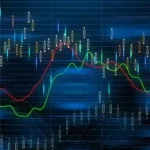Emotions play a significant role in the decision-making process of traders, influencing their perceptions, judgments, and actions in the Forex (foreign exchange) market. Fear, in particular, stands out as a powerful emotion that can lead to irrational behavior and suboptimal trading outcomes. In the context of Forex robot trading, where automated systems execute trades based on predefined rules and algorithms, understanding and managing emotional biases is crucial for optimizing performance and achieving consistent returns. This article delves into the psychology of fear in Forex trading, explores its impact on Forex robot performance, and discusses strategies for mitigating emotional bias to enhance trading success.
The Forex market is a dynamic and fast-paced environment where traders face constant pressure to make decisions amid uncertainty and volatility. Fear, stemming from the fear of loss, fear of missing out (FOMO), and fear of uncertainty, can cloud judgment and lead to impulsive or irrational trading behavior. In Forex robot trading, where decisions are driven by algorithms rather than human emotions, the challenge lies in designing robust trading strategies that can navigate market turbulence and adapt to changing conditions without succumbing to emotional bias.
Understanding the Psychology of Fear:
Fear is a primal emotion rooted in the human psyche, evolved as a survival mechanism to protect against perceived threats or dangers. In the context of Forex trading, fear manifests as a psychological barrier that impedes rational decision-making and undermines trading performance. Traders may experience fear in various forms, such as fear of losing money, fear of making mistakes, or fear of being wrong, all of which can lead to hesitancy, indecision, and avoidance of risk-taking.
Moreover, fear can exacerbate cognitive biases such as loss aversion, where the pain of losses outweighs the pleasure of gains, and confirmation bias, where traders seek information that confirms their preconceived beliefs while disregarding contradictory evidence. These biases can distort perceptions of market reality and reinforce negative trading patterns, leading to a cycle of fear-driven decision-making and suboptimal outcomes.
Impact of Fear on Forex Robot Performance:
In Forex robot trading, the impact of fear on performance is indirect but nonetheless significant. While robots are immune to emotions and biases that plague human traders, they are programmed by humans and thus inherit the biases embedded in their algorithms and trading rules. Fear-driven biases such as risk aversion, herding behavior, and recency bias can influence the design and implementation of trading strategies, leading to suboptimal performance in certain market conditions.
For example, a Forex robot programmed with overly conservative risk management parameters may miss out on profitable trading opportunities or fail to capitalize on trends due to excessive caution. Conversely, a robot programmed with aggressive risk-taking parameters may incur substantial losses during periods of market volatility or adverse price movements. Finding the right balance between risk and reward is essential for mitigating the impact of fear on Forex robot performance and achieving long-term profitability.
Strategies for Overcoming Emotional Bias:
While it is impossible to completely eliminate emotional bias from Forex robot trading, traders can adopt strategies to mitigate its impact and optimize performance. One approach is to design trading algorithms with built-in risk management rules and constraints that limit the potential for large losses and drawdowns. By implementing stop-loss orders, position sizing rules, and portfolio diversification techniques, traders can safeguard against catastrophic losses and reduce the influence of fear on trading decisions.
Additionally, incorporating quantitative risk models and probabilistic frameworks into trading strategies can help traders make more informed and objective decisions based on statistical evidence rather than emotional impulses. By quantifying risk factors such as volatility, correlation, and market sentiment, traders can identify and exploit opportunities with favorable risk-return profiles while minimizing exposure to downside risk.
Furthermore, maintaining discipline and adherence to trading rules is essential for overcoming emotional bias in Forex robot trading. Traders should resist the temptation to deviate from their predefined strategies or intervene in robot trading decisions based on short-term market fluctuations or emotional impulses. Consistency and patience are key virtues in Forex trading, and by staying true to their principles and objectives, traders can mitigate the influence of fear and achieve greater success in the long run.
Conclusion:
Fear is a pervasive emotion in Forex trading that can distort perceptions, cloud judgment, and undermine trading performance. In the context of Forex robot trading, understanding the psychology of fear and its impact on algorithmic decision-making is essential for designing robust and adaptive trading strategies. By implementing risk management techniques, quantitative models, and disciplined trading practices, traders can mitigate the influence of fear on Forex robot performance and achieve consistent returns in the dynamic and unpredictable world of currency trading.



